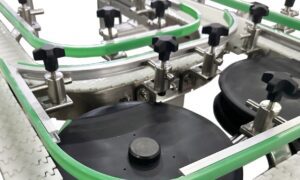The machine tool industry is entering a pivotal phase in 2026. After years of incremental innovation, breakthroughs in automation, AI, connectivity, and sustainability are reshaping how manufacturers produce, maintain, and scale precision components. Whether you are a machine builder, shop owner, or manufacturing executive, understanding the trends of 2026 is essential for remaining competitive in a rapidly shifting global market.
Here are the key machine tool solution trends that will define 2026.
- AI-Driven Machining Becomes Mainstream
AI is no longer futuristic—it’s becoming integral to machining workflows.
In 2026, machine tool solutions in Canada will increasingly rely on:
Predictive Cutting Optimization
AI analyses tool wear, cutting forces, vibration, and heat in real time to optimize feed rates, spindle speed, and tool paths dynamically.
Automated Parameter Tuning
CNC controls will adjust machining parameters based on material type, part geometry, and real-time sensor data.
AI-Enhanced Tool Life Management
Machine learning models predict failure before it occurs, reducing downtime and scrap.
The result? Better accuracy, higher throughput, and dramatically fewer unplanned stoppages.
- Hyper-Automation Through Robotics and Autonomous Systems
Automation is accelerating, and 2026 marks a shift from isolated robotic cells to fully integrated, autonomous ecosystems.
Expect to see:
Collaborative robots (cobots) performing tool changes, inspection, and loading/unloading
AGVs/AMRs transporting parts automatically
Lights-out machining becoming common for precision parts
Standardized automation modules enabling faster deployment
Manufacturers are moving from “buying machines” to “buying automated production capability.”
- Digital Twins for Every Machine Tool
Digital twins are becoming essential—not optional.
What’s changing in 2026:
Every new premium machine tool is shipped with a digital twin
Simulation + verification happen before the spindle even starts
Virtual commissioning reduces setup times dramatically
Real-time machine replica models track health, accuracy, and performance
Digital twins close the loop between design, engineering, and machining, enabling nearly error-free production.
- Hybrid Manufacturing (Additive + Subtractive) Grows Fast
Hybrid machine tools—combining additive manufacturing (AM) with traditional CNC—are emerging as a powerful trend.
By 2026, expect:
Laser metal deposition integrated with 5-axis milling
Additive repair processes for turbine blades, molds, and high-value components
Multi-material builds enabling new part geometries
Reduced waste and shorter lead times for prototyping
Hybrid systems enable workflows that were impossible just a few years ago.
- Ultra-Precision Machining Expands Across Industries
Demand for micro and nano machining is exploding across:
Semiconductor equipment
Medical implants
Optics and photonics
EV components
Aerospace and defense
Machine tool builders are responding with:
Higher stiffness frames
Thermal compensation systems
Nanometer-level feedback loops
Air-bearing spindle technologies
Precision is becoming a competitive differentiator—not just a technical feature.
- Sustainability Becomes a Core Design Priority
By 2026, environmental performance will be central to machine tool innovation.
The industry is moving toward:
Energy-efficient CNC controls
Low-coolant and dry machining techniques
Recyclable materials for machine construction
Smart power monitoring inside controllers
Coolant filtration and fluid-recovery systems
Manufacturers are not only seeking efficiency but meeting regulatory requirements and customer expectations.
- Connectivity and Data Integration Across the Shop Floor
Industry 4.0 continues to mature, but 2026 marks a shift from data collection to data-driven decision-making.
Key developments:
Universal machining data standards (MTConnect, OPC UA)
Centralized dashboards for machine health, OEE, and performance
Cloud-enabled CNC controls
Real-time alerts and remote troubleshooting
Plug-and-play IoT modules
Connected machines become smarter, enabling predictive maintenance and optimized workflows.
- Customizable, Modular Machine Tool Platforms
To meet shorter product cycles, manufacturers are adopting modular machine architectures.
In 2026, expect:
Machine tools designed as “platforms”
Rapid swap-out modules (spindles, tables, tool changers, automation kits)
Configurable work envelopes
Scalable control options
This gives manufacturers the ability to reconfigure production without replacing entire machines.
Conclusion: 2026 Marks the Rise of the Intelligent, Connected, Autonomous Machine Shop
The future of machine tool solutions is clear: smarter, greener, and more automated. Shops that embrace AI-driven machining, integrated automation, digital twins, hybrid processes, and sustainable manufacturing will be positioned to lead.
The next generation of manufacturing is faster, more flexible, more precise, and more intelligent than ever before.



































